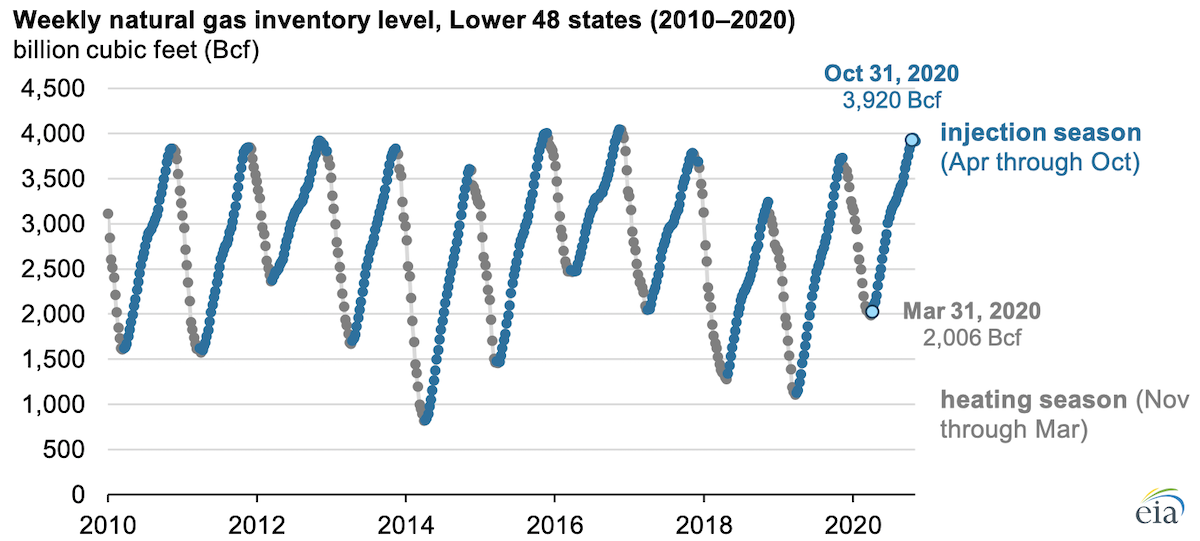The amount of working natural gas in storage in the United States ended the natural gas injection, or refill, season (April 1–October 31) at 3,920 billion cubic feet (Bcf), according to interpolated data from the U.S. Energy Information Administration’s (EIA) Weekly Natural Gas Storage Report released on November 13. The amount of natural gas held in underground storage in the Lower 48 states is now near the record-high value, 4,047 Bcf, reached in mid-November 2016.

Working natural gas inventories were 2,006 Bcf on April 1, or 314 Bcf more than the average April 1 total in the previous five years. Higher inventory levels at the start of the injection season mean that storage operators can reach their end-of-season targets with smaller natural gas injections.
Net additions to working natural gas inventories totaled 1,914 Bcf during the injection season, about 2% less than the five-year average and 23% less than the near-record net injections of 2,571 Bcf reported during the 2019 injection season.
U.S. natural gas inventories climbed quickly in the spring and early summer. By the week of August 7, inventories exceeded the upper bound of the previous five-year range (the lowest to the highest levels) for that time of year. Since then, the pace of weekly injections has slowed because of slowing natural gas production throughout 2020 and relatively steady natural gas demand.
Principal contributor: Jose Villar

Follow us on social media: